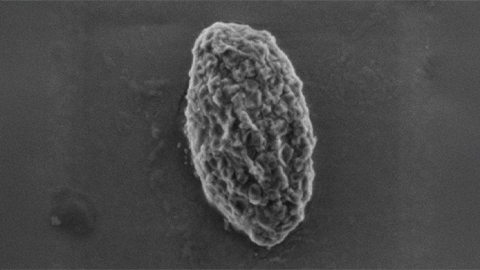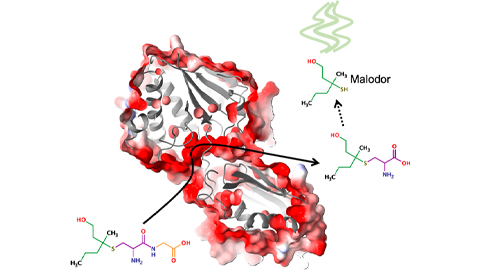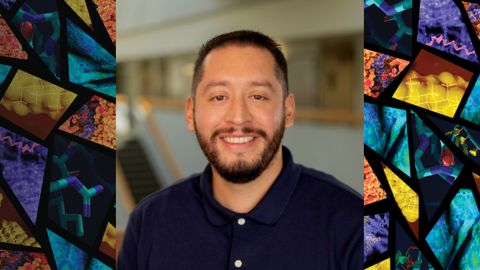From the journals: MCP
How Alzheimer’s affects brain glycosylation. Reducing false positives in mass spectrometry. With O-glycopeptides, two methods are better than one. Read about papers on these topics recently published in the journal Molecular & Cellular Proteomics.
How Alzheimer’s affects brain glycosylation
Alzheimer’s disease is the most common neurodegenerative disorder worldwide, and we do not have a cure. Researchers recently have increased studies of the role of posttranslational protein modifications such as glycosylation — the enzymatic addition of a sugar, also known as a glycan, to a protein. Glycosylation is also one of the protein modifications implicated in Alzheimer’s.

In a recent paper in the journal Molecular & Cellular Proteomics, Suttipong Suttapitugsakul, Kathrin Stavenhagen and a team from Harvard Medical School report that they found several stage-specific differences in glycosylation when they used qualitative glycoproteomics to analyze human brain tissue across the clinical spectrum of Alzheimer’s disease.
The researchers focused on N-glycosylation, wherein the glycan is attached to a protein at a nitrogen atom, often in asparagine amino acids. After collecting proteins from 30 brain tissue samples, they identified more than 300 glycoproteins, most of which were shared among the three groups they tested: symptomatic Alzheimer’s, asymptomatic Alzheimer’s and healthy brains.
They observed differences in the frequency of specific types of glycosylation, such as fucosylation and galactosylation wherein fucose and galactose sugar molecules respectively are added. These glycosylation types were less frequent in asymptomatic and symptomatic Alzheimer’s brains relative to healthy ones. They also found differences in levels of bisection and number of antennae, both variations related to addition of N-acetylglucosamine to N-glycans.
This study is the first to look at N-glycosylation on a large scale, with 580 N-linked sites found across the 2,035 glycopeptides identified across all samples. The human brain contains about 1,900 glycoforms (glycoproteins and other associated molecules), making it challenging to encapsulate fully.
These researchers have expanded knowledge in this area and shown the importance of studying the role N-glycosylation plays in the progression of Alzheimer’s disease.
Reducing false positives in mass spec
When it comes to understanding the proteome — an organism’s complete collection of proteins — mass spectrometry is increasingly effective at using properties such as charge and mass to identify the presence of proteins, peptides and lipids. But while the sensitivity and accuracy of mass spectrometers have improved, researchers still find false positives when identifying proteins in large sets of proteomics data. To counter this, they employ database search algorithms to identify the false positives, resulting in a false discovery rate, or FDR, metric that tells them what percentage of their matches are actually null.
Matthew The and a team at the Technical University of Munich have developed an improved FDR algorithm for protein groups, which are notoriously difficult to analyze because proteins originating from the same gene share certain structures. They describe their work in a recent paper in the journal Molecular & Cellular Proteomics.
Even with large data sets, their approach, called the Picked Protein Group FDR method, produces accurate FDR estimates for protein groups. They tested the method against 29 human tissues and found more protein groups than MaxQuant, a standard software. The method also identified 18,000 protein groups with a low 1% false discovery rate in a large human proteome data set. The authors have turned their algorithm into a software tool compatible with MaxQuant and are providing access to fellow proteomics scientists.
With O-glycopeptides, two methods are better than one
Glycosylation is essential for determining proteins’ structure and function as well as their stability, protein interactions and more. Thus, this enzymatic reaction in which a sugar molecule is added to a protein can affect the stability, antigenicity and activity of recombinant therapeutic proteins significantly and is of interest to the pharmaceutical industry.
Two types of glycopeptides, N-linked and O-linked, commonly are characterized through mass spectrometry. Of these, O-glycosylation is more difficult to identify because there is no consensus sequence other than that glycosylation can occur only at serine and threonine residues. Adam Pap of the Eotvos Lorand Research Network and a team in Hungary compared four analytic software packages for O-glycosylation. In a recent paper in the journal Molecular & Cellular Proteomics, they write that the results showed more variation than previously expected.
The researchers compiled a selective data set of human urinary glycoproteins and ran it through three search engines (Byonic, Protein Prospector and O-Pair) and an MS-Filter program. The false identification rate was higher than they expected, highlighting the limits of the methodology. Based on these results, the authors recommend pairing two fragmentation methods (higher energy collision dissociation and electron-transfer higher energy collision dissociation) when analyzing O-glycosylation data. They provide specific recommendations for improving the existing software to enhance their analysis.
Enjoy reading ASBMB Today?
Become a member to receive the print edition four times a year and the digital edition monthly.
Learn moreGet the latest from ASBMB Today
Enter your email address, and we’ll send you a weekly email with recent articles, interviews and more.
Latest in Science
Science highlights or most popular articles

Defeating deletions and duplications
Promising therapeutics for chromosome 15 rare neurodevelopmental disorders, including Angelman syndrome, Dup15q syndrome and Prader–Willi syndrome.

Using 'nature’s mistakes' as a window into Lafora disease
After years of heartbreak, Lafora disease families are fueling glycogen storage research breakthroughs, helping develop therapies that may treat not only Lafora but other related neurological disorders.

Cracking cancer’s code through functional connections
A machine learning–derived protein cofunction network is transforming how scientists understand and uncover relationships between proteins in cancer.

Gaze into the proteomics crystal ball
The 15th International Symposium on Proteomics in the Life Sciences symposium will be held August 17–21 in Cambridge, Massachusetts.

Bacterial enzyme catalyzes body odor compound formation
Researchers identify a skin-resident Staphylococcus hominis dipeptidase involved in creating sulfur-containing secretions. Read more about this recent Journal of Biological Chemistry paper.

Neurobiology of stress and substance use
MOSAIC scholar and proud Latino, Bryan Cruz of Scripps Research Institute studies the neurochemical origins of PTSD-related alcohol use using a multidisciplinary approach.

